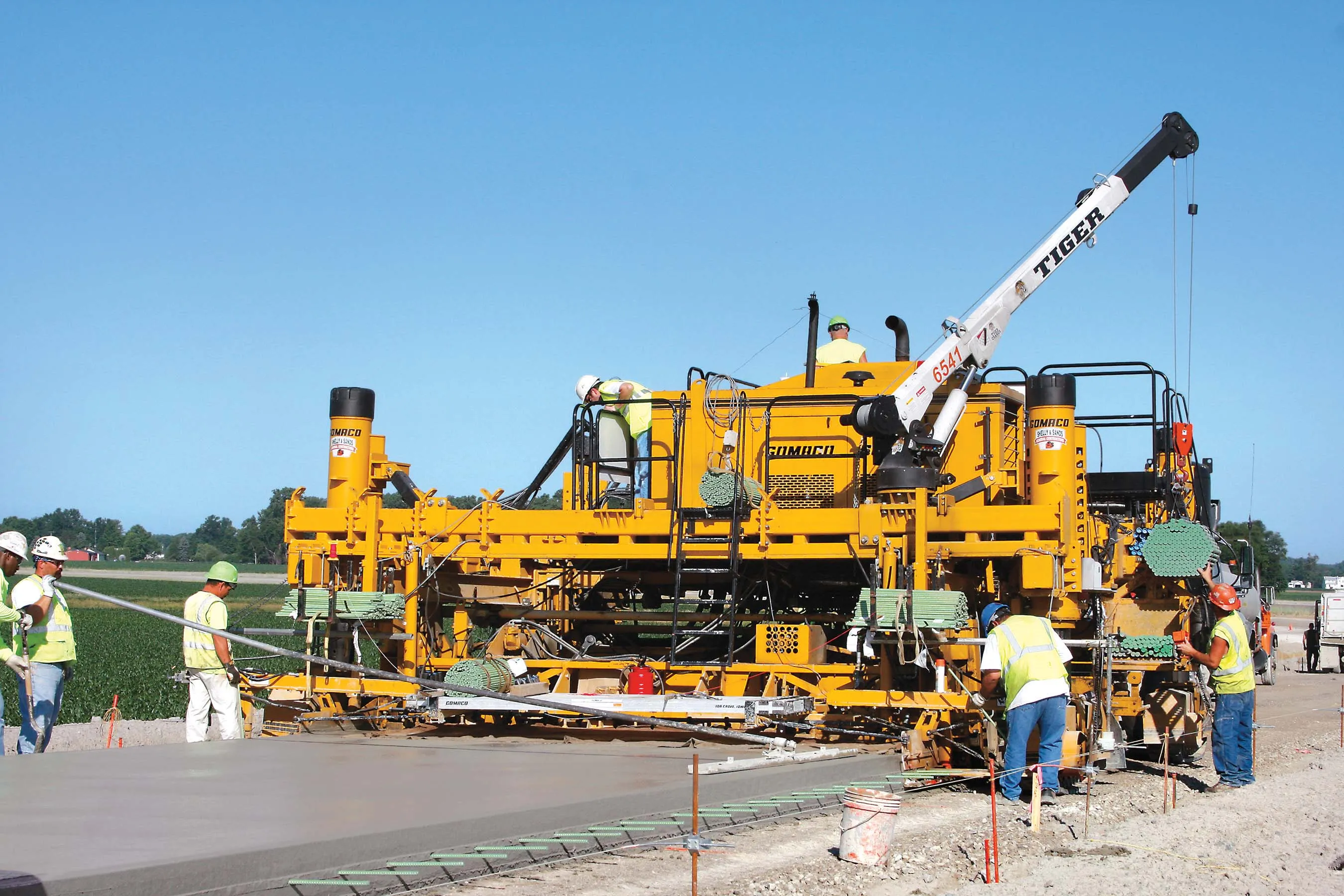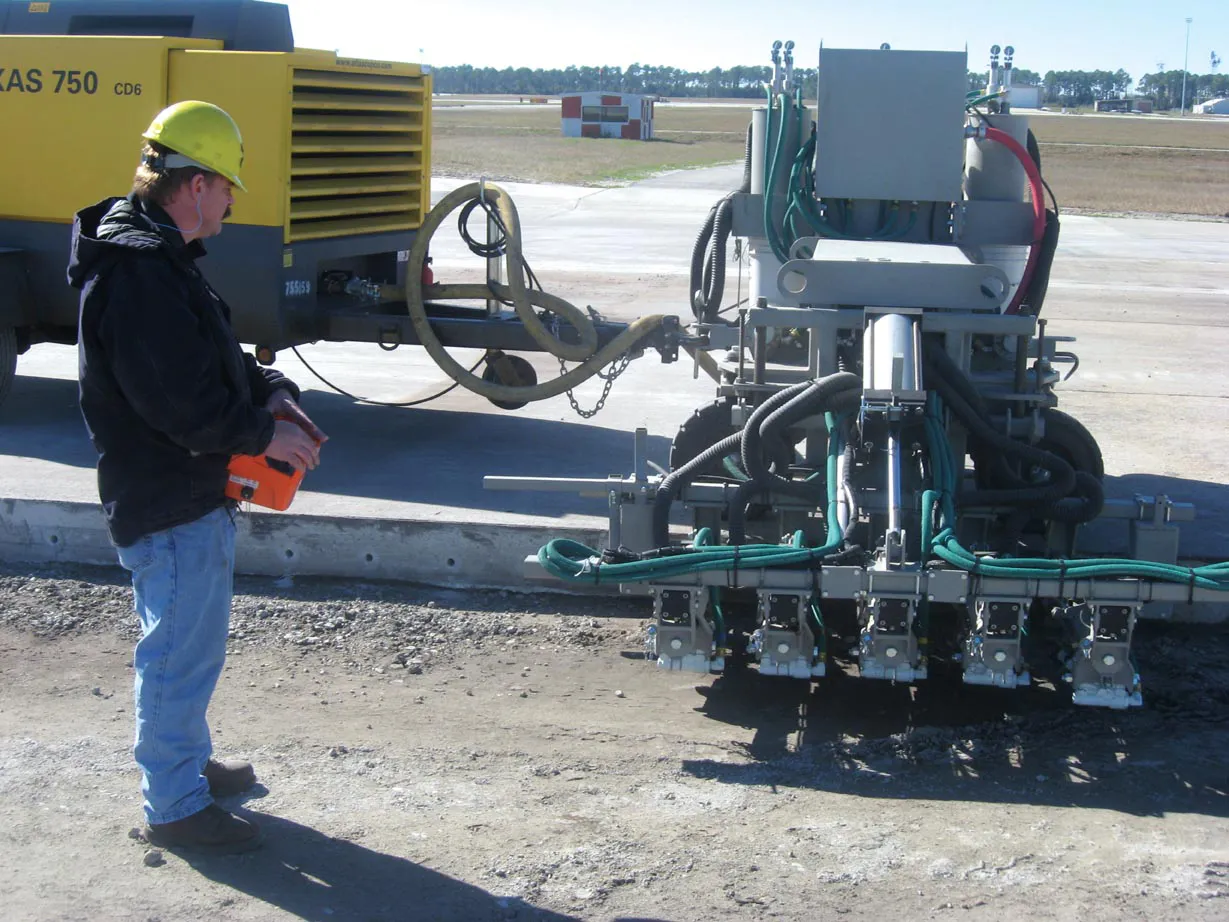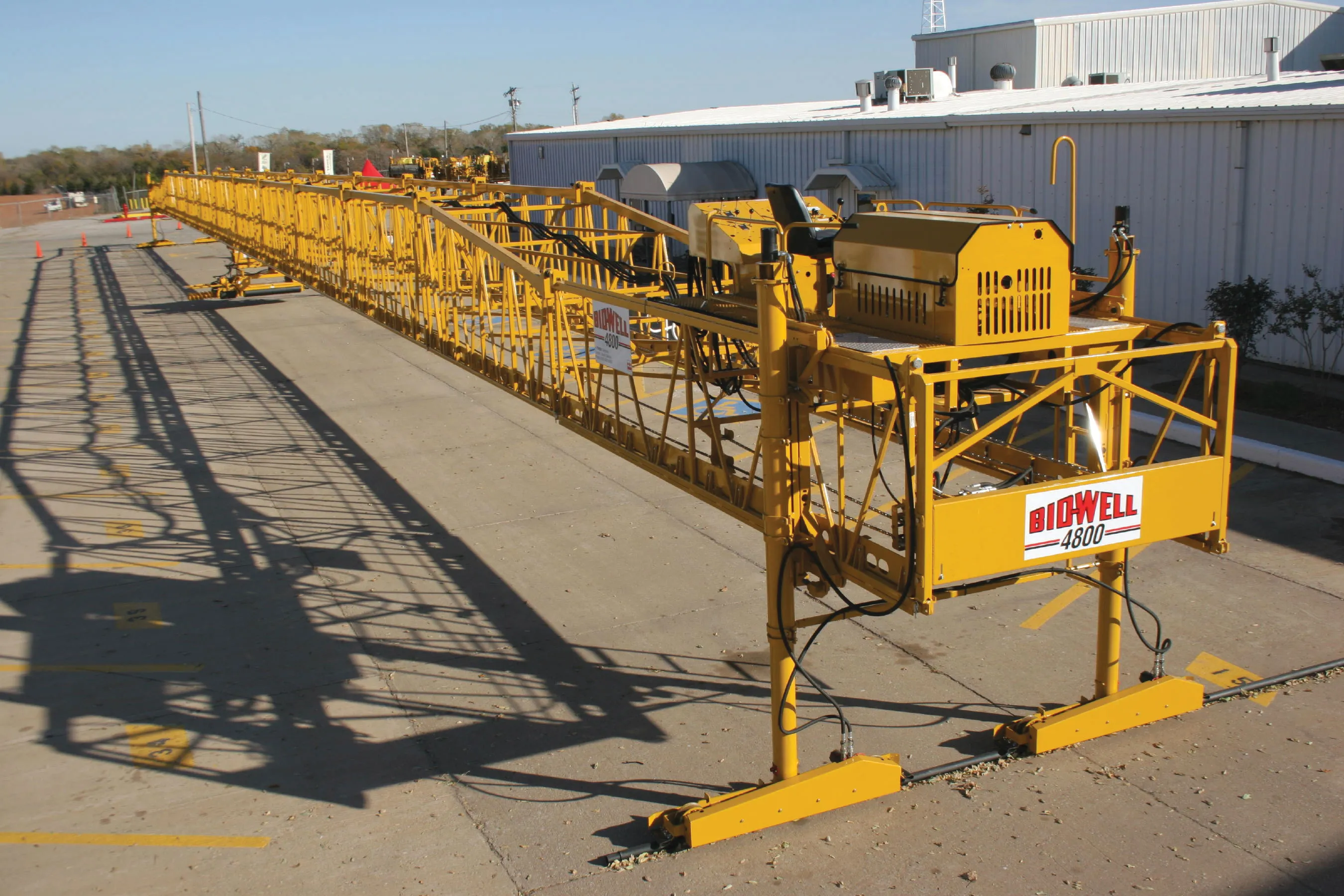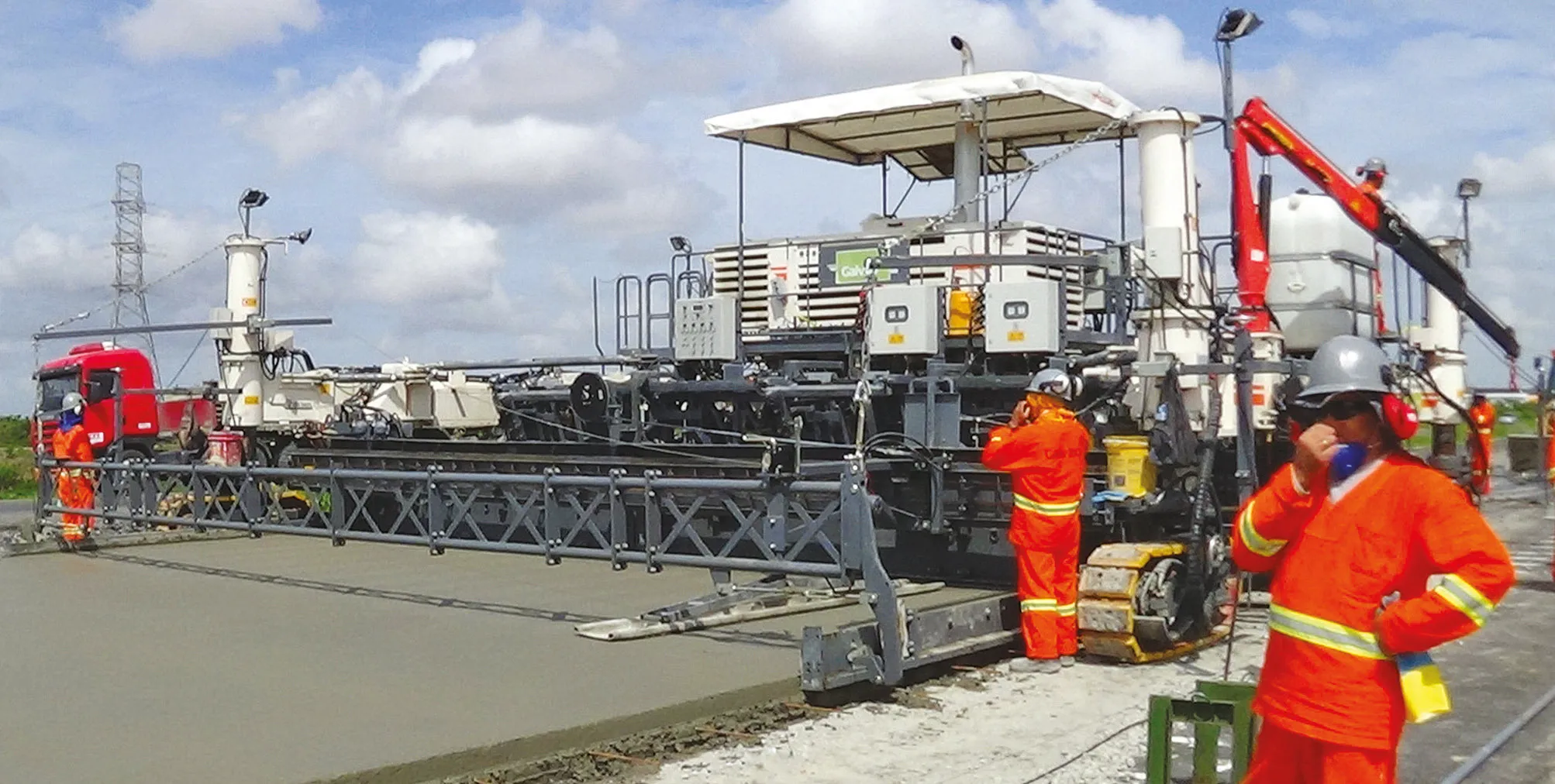A new and more compact slipform paver is being introduced by Guntert & Zimmerman, widening the firm’s range of models. The company has been known in the past for its large slipform pavers used in road and airport runway jobs but in recent years has developed smaller and more compact units. The S400 shares many of its features with the existing S600, which was previously the most compact model in the line-up. The firm’s German representative, Peter Hedke said, “It’s the smallest machine we’ve ever built.”
March 17, 2016
Read time: 3 mins
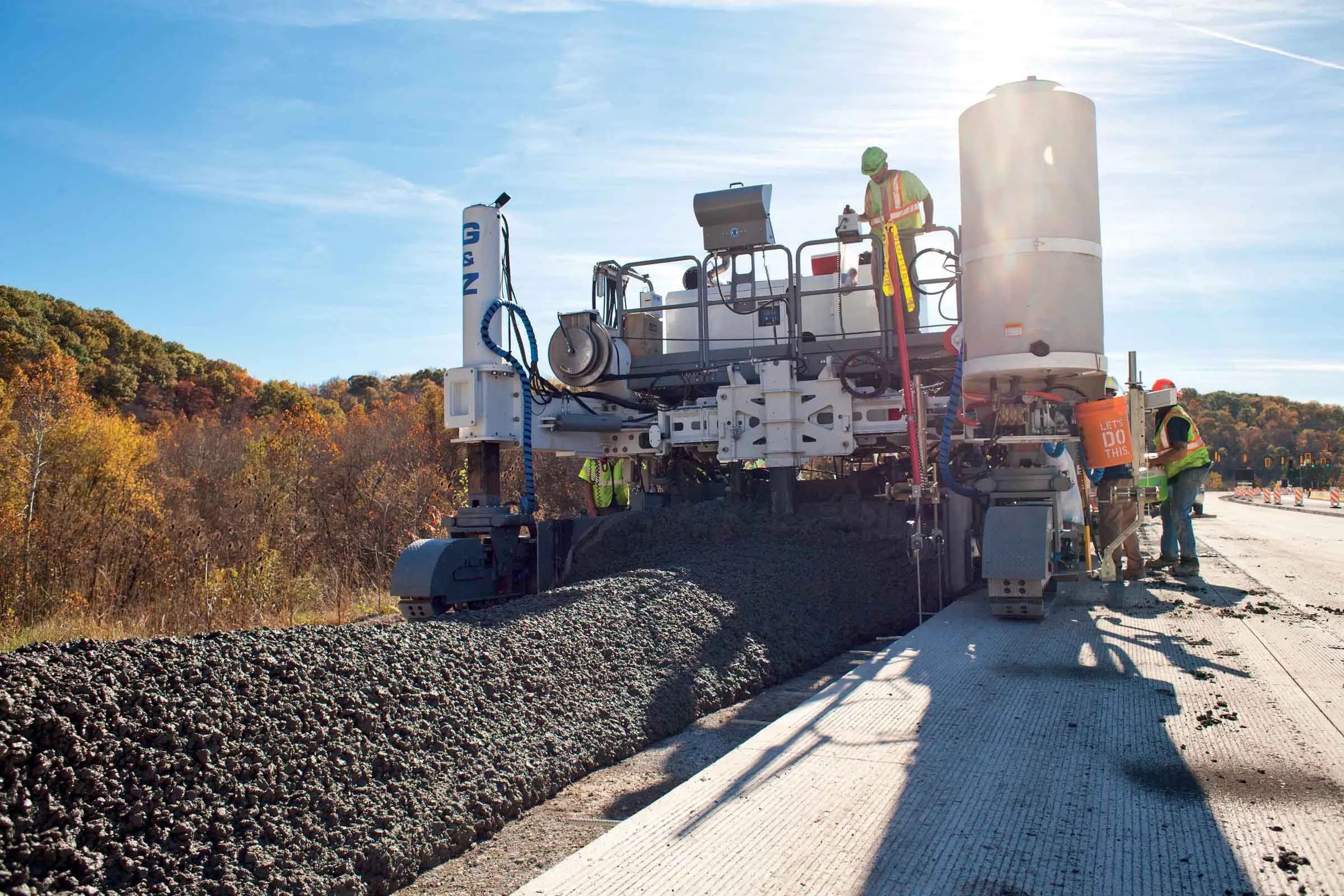
A new and more compact slipform paver is being introduced by 225 Guntert & Zimmerman, widening the firm’s range of models. The company has been known in the past for its large slipform pavers used in road and airport runway jobs but in recent years has developed smaller and more compact units. The S400 shares many of its features with the existing S600, which was previously the most compact model in the line-up. The firm’s German representative, Peter Hedke said, “It’s the smallest machine we’ve ever built.”
This new unit has been designed to combine versatility with productivity and Hedke said, “It’s an entry level machine for contractors or a machine for existing customers to widen their fleet.”
However the firm is keen to point out that this is also a high quality machine that can deliver high quality paving. The machine features G&Z’s sophisticated EGON operation and guidance package and can offer remote diagnostics and the firm’s NoLine stringless integration technology.
As with other slipformers in the G&Z range, the new S400 can be used in combination with machine control technologies from different suppliers. The new S400 retains the same novel SmartLeg turnbuckle design that allows fast width changes and according to Hedke, this is a key feature as it ensures the machine is highly versatile, as is required for slipformers in its class. He said, “It’s a single lane machine and a smaller version of the S600. It can be used for offset paving, fitted with molds to slipform New Jersey barriers.”
The S400 also has the firm’s AccuSteer system and is designed to cope with tight curves such as kerbs in parking areas or for roads linking to housing developments and Hedke added, “It can be used to pave roundabouts.”
Paving widths for the machine range from 2-5.3m due to the telescopic tractor frame and up to 7.5m with extensions, while the S400 can be equipped with a dowel bar inserter (DBI) if required. Set up to pave a 5m width, the machine will tip the scales around 22tonnes, although the variety of options and attachments can vary the weight significantly. The firm offers a wide array of molds to suit different applications and the S400 can be configured in a wide range of ways, as required by the needs of a particular jobsite. A trailing finishing pan can be fitted also if required. Other options include an oscillating correcting beam, concrete tamper bar, water spray bar, split guillotine sideforms, computer-controlled vibration monitoring, computer-controlled crown/transition system, narrow profile paving kit and a final finisher. The firm says that rapid width changes can be made using G&Z’s proven TeleEnd system, while the machine can be used in zero clearance applications. High visibility is claimed from the operator platform, ensuring more consistent paving results according to the firm.
Power comes from a 125kW diesel that meets the Tier 4 Interim emissions requirements and is also said to be highly economical on fuel, as well as being quiet in use, allowing operation in urban areas. A Tier 3 diesel option with the same power output is also available, depending on local market needs.
This new unit has been designed to combine versatility with productivity and Hedke said, “It’s an entry level machine for contractors or a machine for existing customers to widen their fleet.”
However the firm is keen to point out that this is also a high quality machine that can deliver high quality paving. The machine features G&Z’s sophisticated EGON operation and guidance package and can offer remote diagnostics and the firm’s NoLine stringless integration technology.
As with other slipformers in the G&Z range, the new S400 can be used in combination with machine control technologies from different suppliers. The new S400 retains the same novel SmartLeg turnbuckle design that allows fast width changes and according to Hedke, this is a key feature as it ensures the machine is highly versatile, as is required for slipformers in its class. He said, “It’s a single lane machine and a smaller version of the S600. It can be used for offset paving, fitted with molds to slipform New Jersey barriers.”
The S400 also has the firm’s AccuSteer system and is designed to cope with tight curves such as kerbs in parking areas or for roads linking to housing developments and Hedke added, “It can be used to pave roundabouts.”
Paving widths for the machine range from 2-5.3m due to the telescopic tractor frame and up to 7.5m with extensions, while the S400 can be equipped with a dowel bar inserter (DBI) if required. Set up to pave a 5m width, the machine will tip the scales around 22tonnes, although the variety of options and attachments can vary the weight significantly. The firm offers a wide array of molds to suit different applications and the S400 can be configured in a wide range of ways, as required by the needs of a particular jobsite. A trailing finishing pan can be fitted also if required. Other options include an oscillating correcting beam, concrete tamper bar, water spray bar, split guillotine sideforms, computer-controlled vibration monitoring, computer-controlled crown/transition system, narrow profile paving kit and a final finisher. The firm says that rapid width changes can be made using G&Z’s proven TeleEnd system, while the machine can be used in zero clearance applications. High visibility is claimed from the operator platform, ensuring more consistent paving results according to the firm.
Power comes from a 125kW diesel that meets the Tier 4 Interim emissions requirements and is also said to be highly economical on fuel, as well as being quiet in use, allowing operation in urban areas. A Tier 3 diesel option with the same power output is also available, depending on local market needs.


